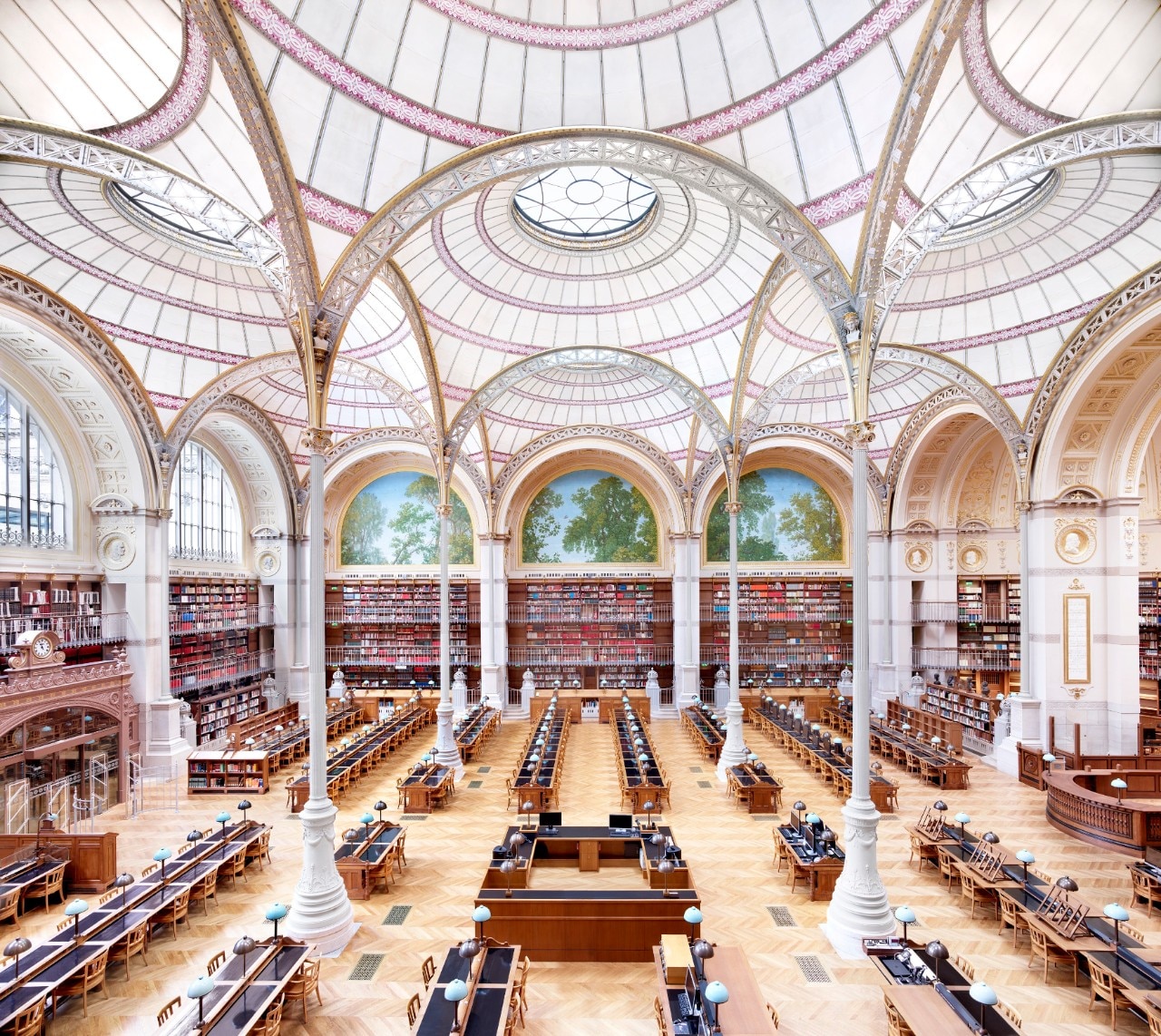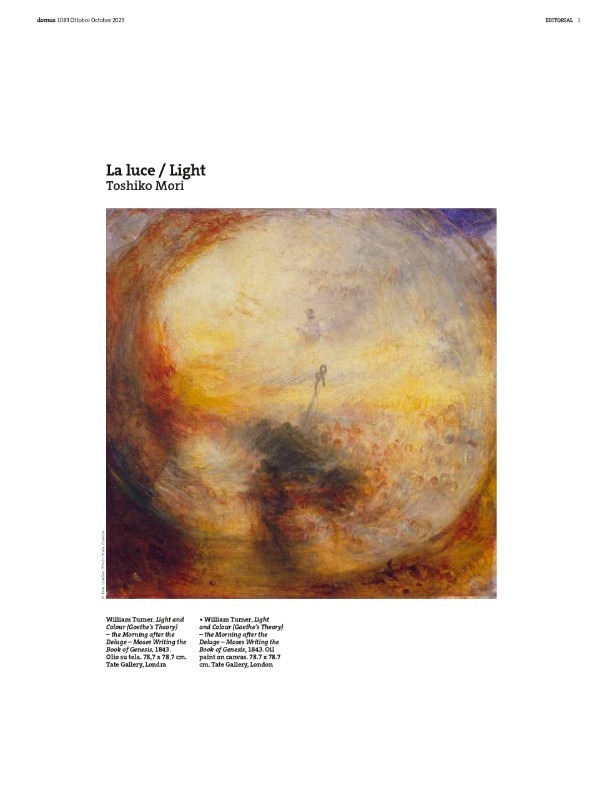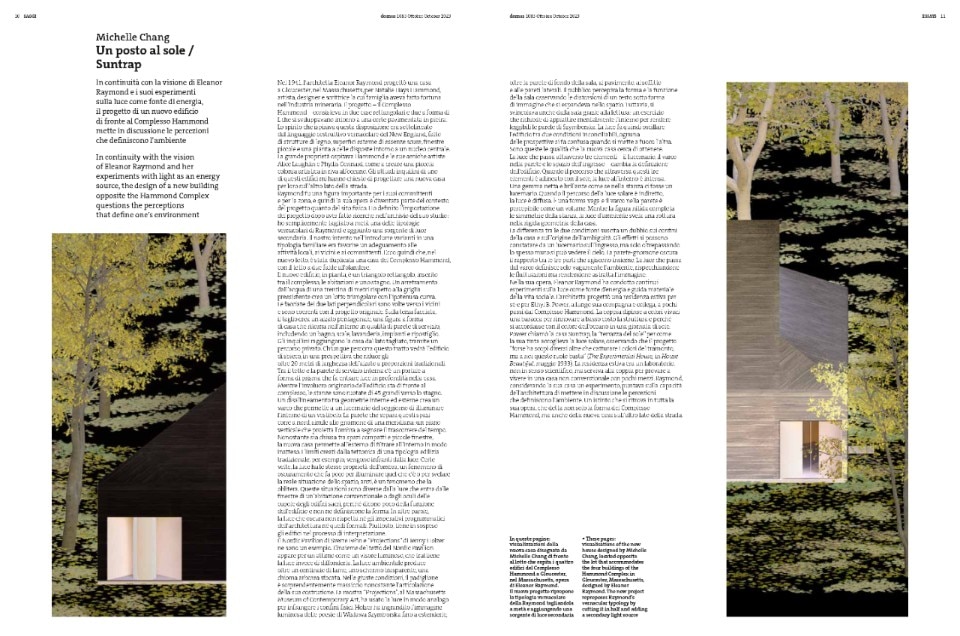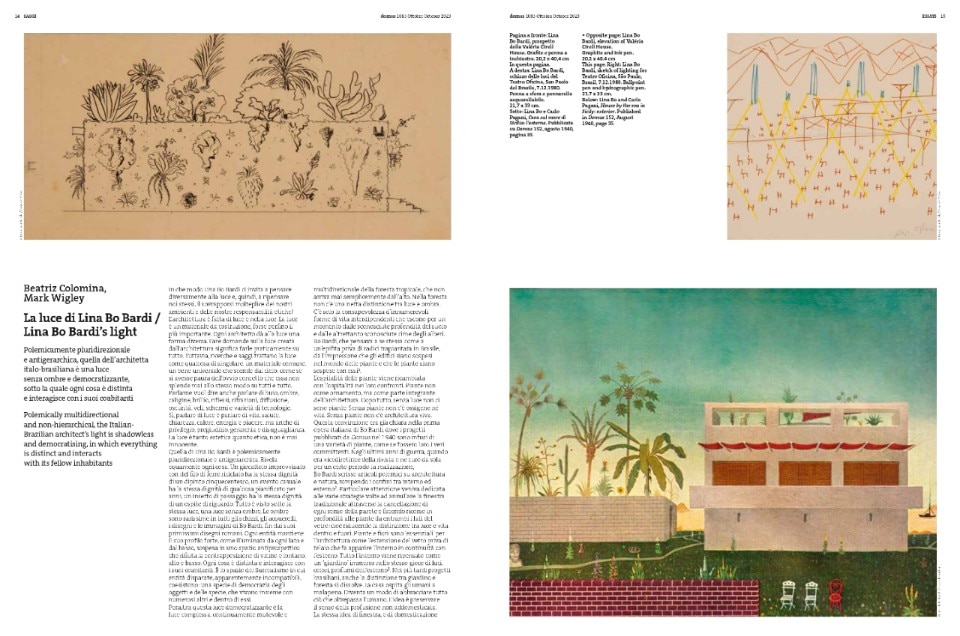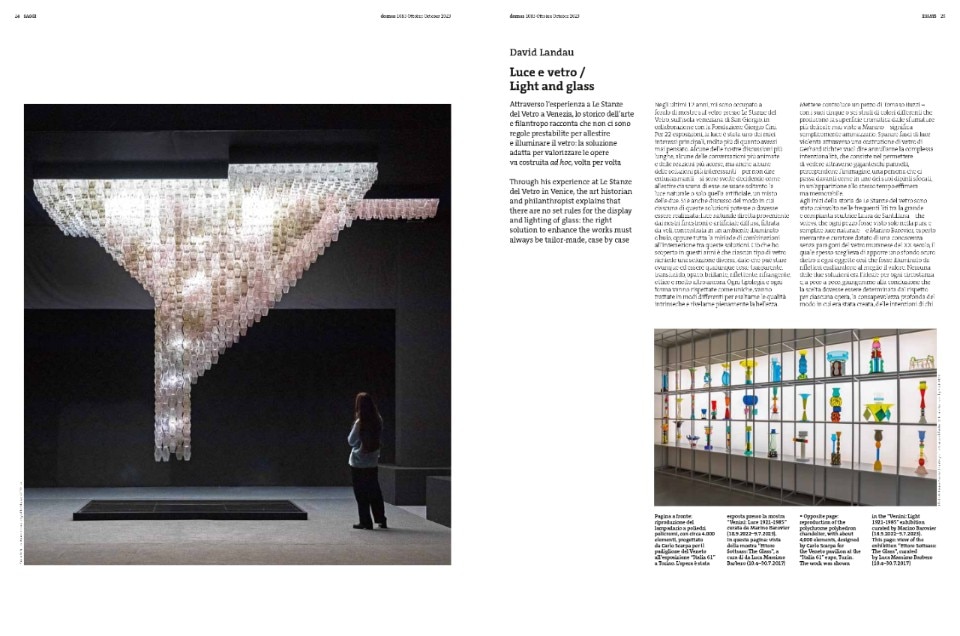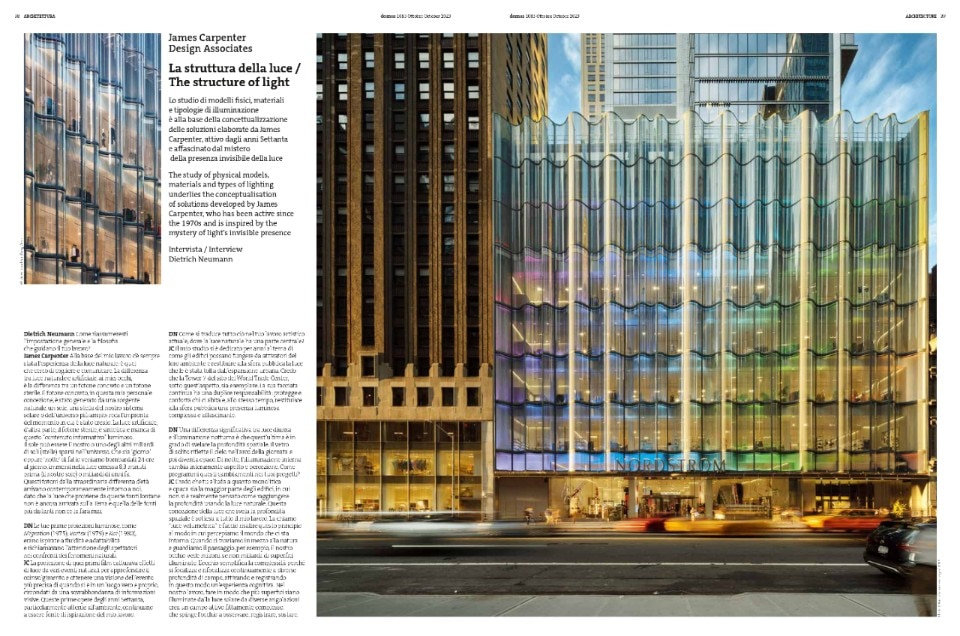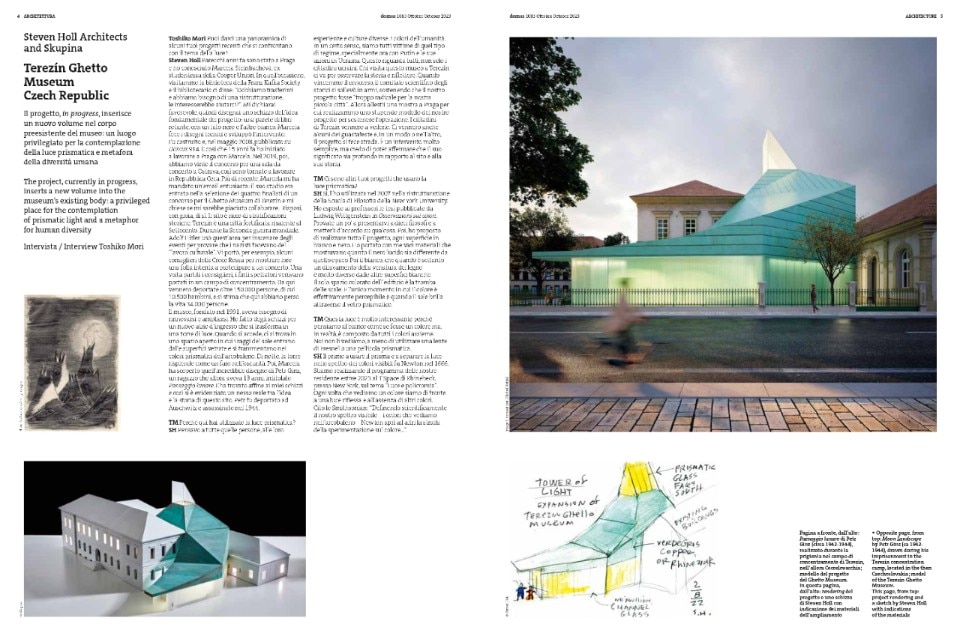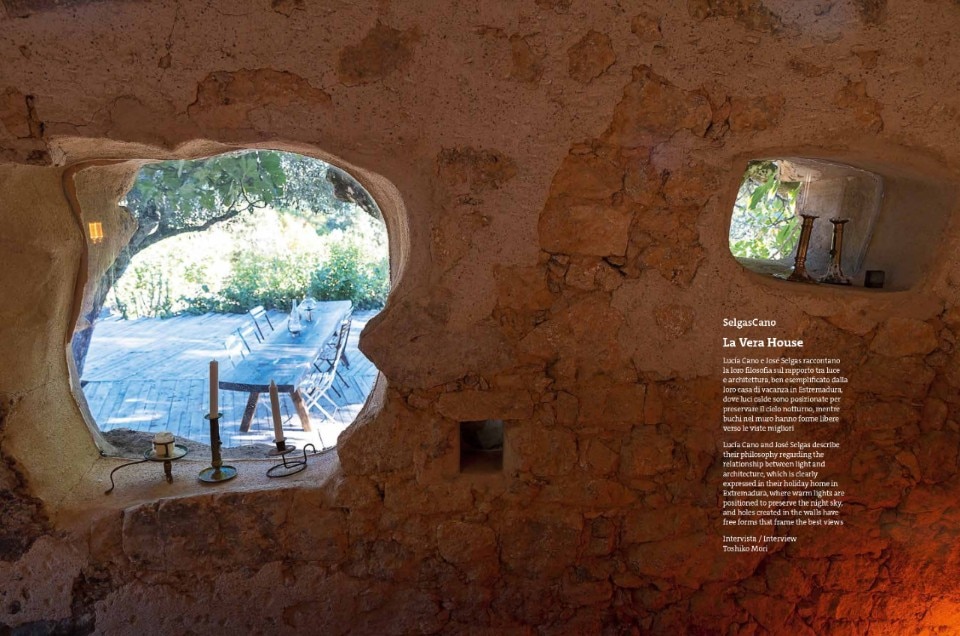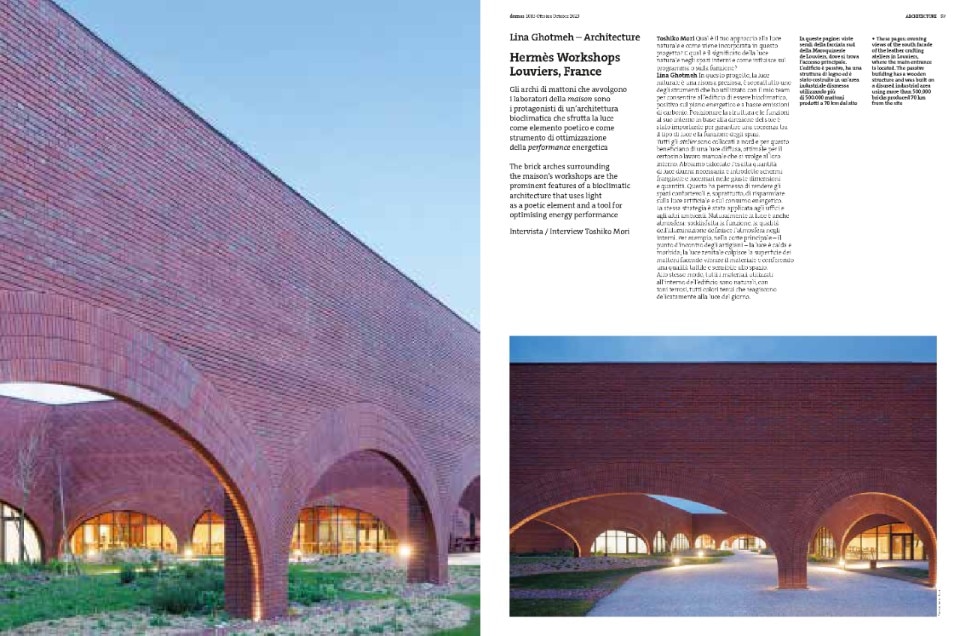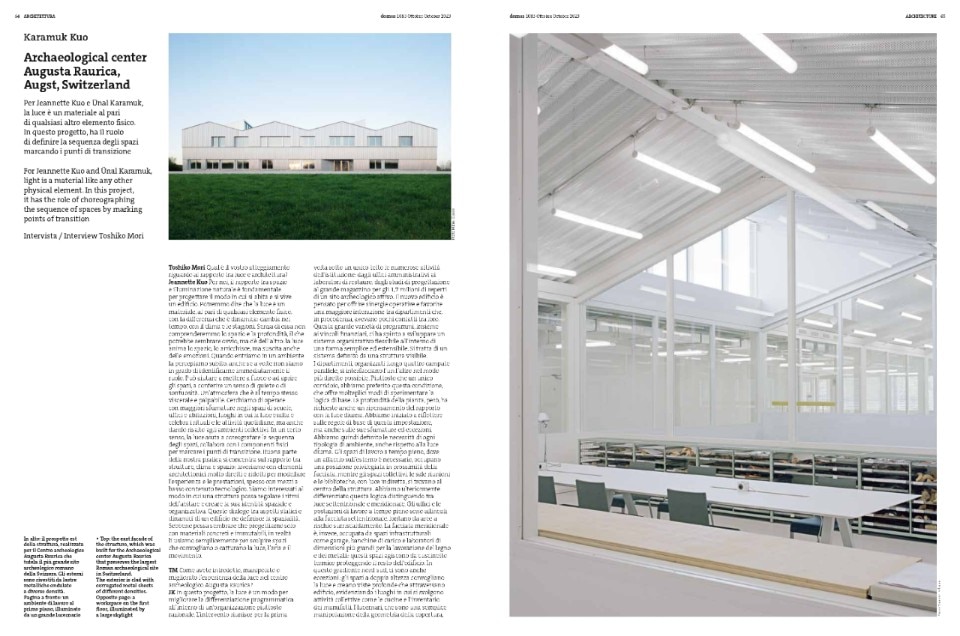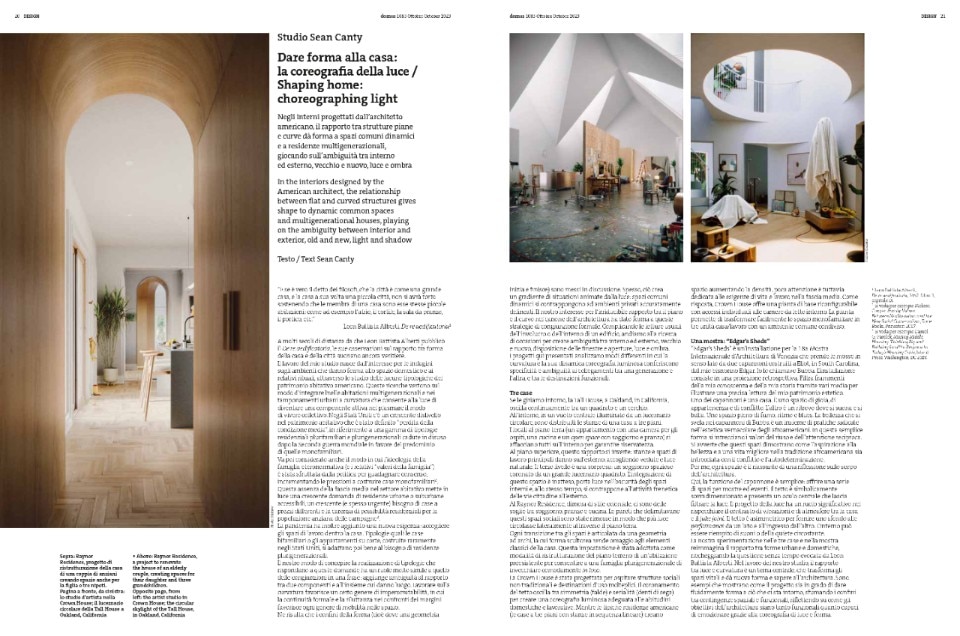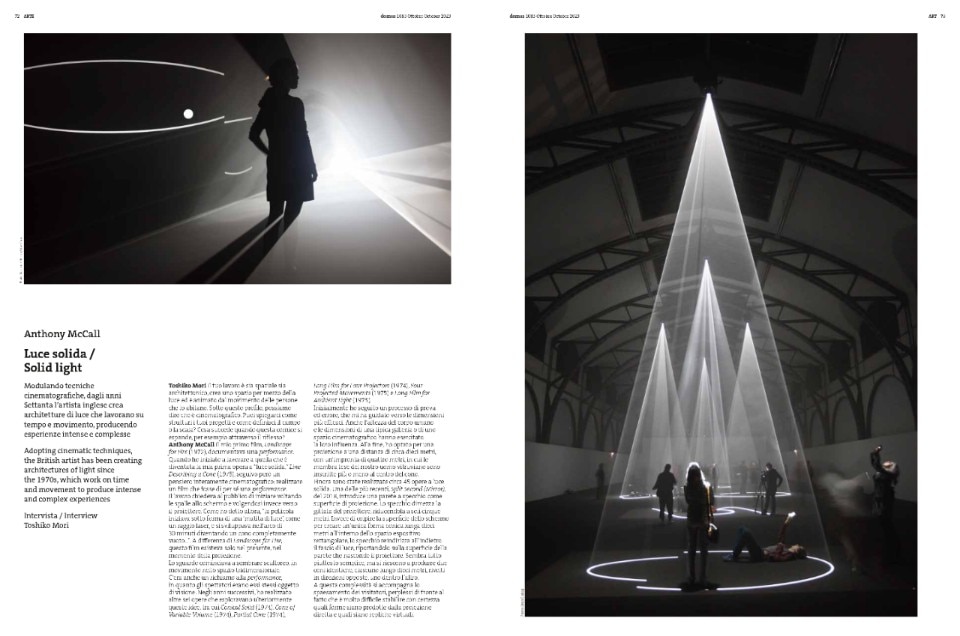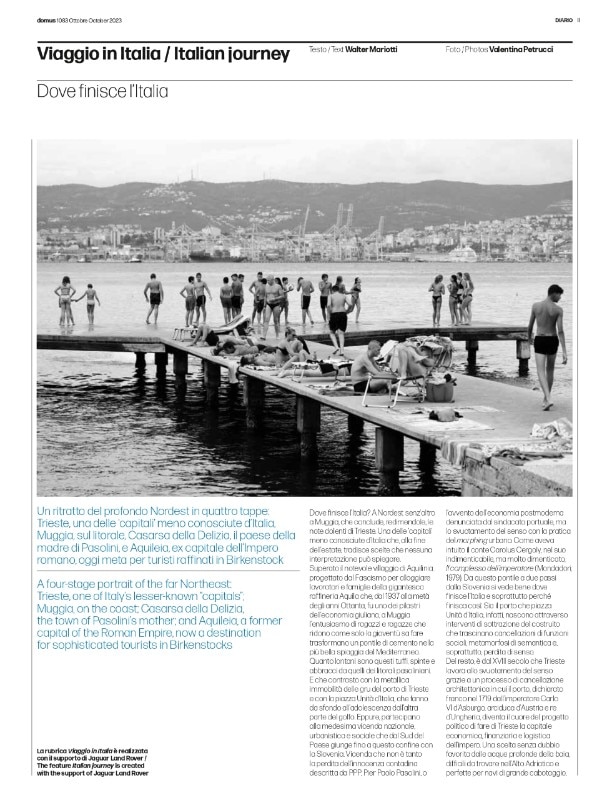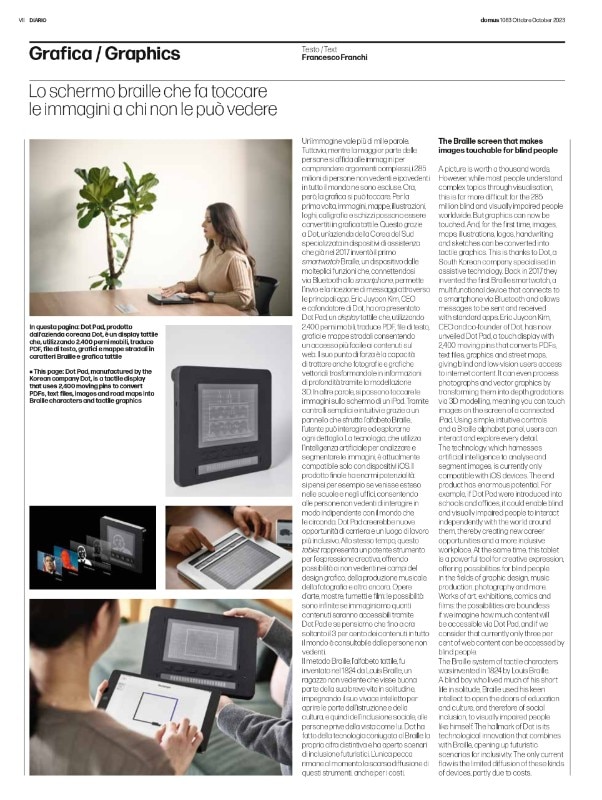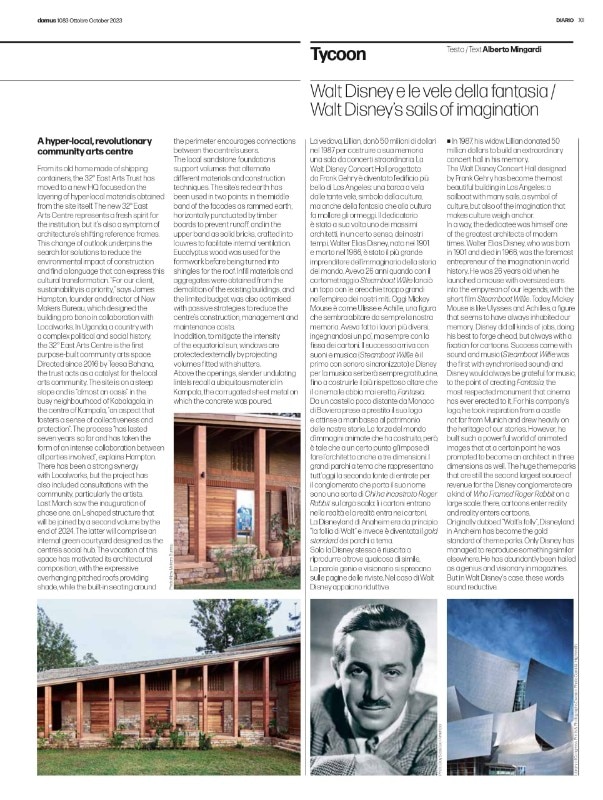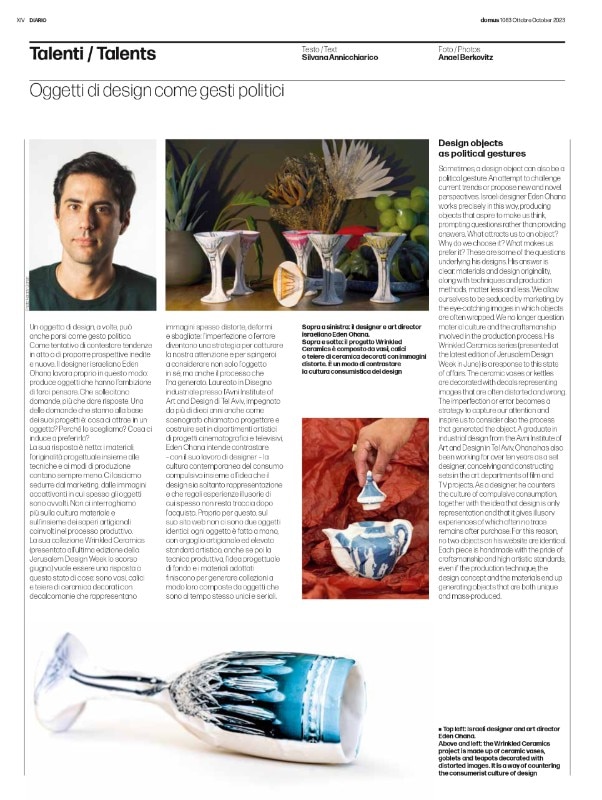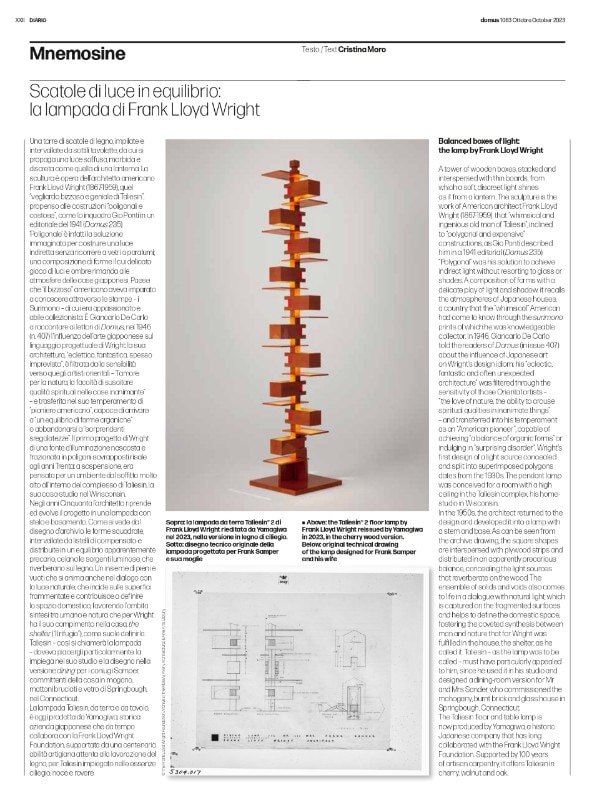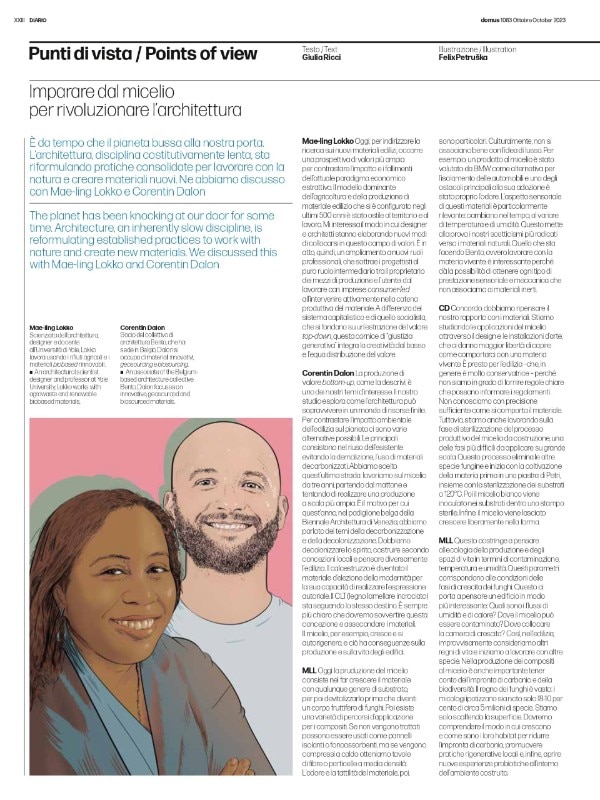This October’s Domus issue focuses on light. In her editorial, Toshiko Mori traces the history of the relationship of this element with the world of design and the arts. “For architecture, art and design, light is an essential tool in the creation of spaces, giving color and emphasis to forms, shaping our emotional and visceral experience of the world around us,” argues the architect and scholar.
Among the Essays, the one by Michelle Chang, director of the architecture firm JaJa Co, focuses on the recent project for Gloucester House, in Massachusetts. It is a dialogue with the vision that architect Eleanor Raymond applied to build the nearby Hammond Complex (1941), in which she experimented with light as a source of energy.
Then, Beatriz Colomina and Mark Wigley give their interpretation of Lina Bo Bardi’s work through light. The authors highlight how each architect declines light differently and how “Light is just as aesthetic as it is ethical; it is never innocent.” That of Bo Bardi is a democratizing, multidirectional, and anti-hierarchical light that resonates with the architect’s revolutionary thinking.
Art historian, curator, and philanthropist David Landau talks about the experience of putting on display glass works in the gallery of Le Stanze del Vetro (Glass Rooms) on the San Giorgio Maggiore Island in Venice. From Ettore Sottsass to Carlo Scarpa, all the way to artists like Václav Cigler and Gerhard Richter. For each author and exhibition, Landau shows how light was used to bring out the best of the works.
Dietrich Neumann focuses on the work of James Carpenter and his studio, active since the 1970s: a firm that has been fusing art, structure, and materials to articulate and integrate the experience of light into the project. To further delve into the essay, Naumann interviewed the American-Canadian designer.
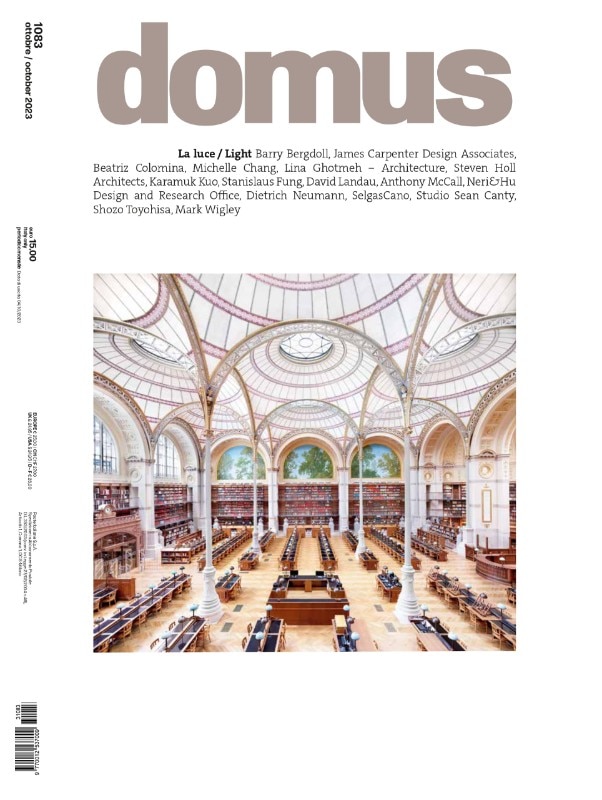
The Architecture section presents new work by Steven Holl Architects, SelgasCano, Neri&Hu Design and Research Office, Lina Ghotmeh – Architecture e Karamuk Kuo.
The dialogue between two 2023 guest editors focuses on the ongoing project for the Terezín Ghetto Museum in Czech Republic, in which Holl uses prismatic light as a metaphor to celebrate human diversity. Lucía Cano and José Selgas present their vacation house in Estremadura, which well exemplifies the meaning that light has in their work and highlights the different role that it plays both during the day and at night. The adaptive repurposing of the historical headquarters of the Lao Ding Feng confectionary factory in Beijing, by Lyndon Neri and Rossana Hu’s firm, proposes a combination of natural and artificial light.
Stanislaus Fung’s interview emphasizes the approach of two designers to lighting, which aspires to overtake the idea of spectacularization. At the same time, Lina Ghotmeh tells Toshiko Mosi how Hermès workshops in Louviers, France, are characterized by a series of brick arches that exploit light both as a poetic element and tool for optimizing the building’s energy performance. Lastly, Jeanette Kuo and Ünal Karamuk’s Zurich-based firm has recently completed the Archaeological Center Augusta Raurica in Augst in Switzerland. This new great structure hosts the institution that has the role of safeguarding and promoting the largest Roman archeological site of the country and gathers its various functions. Offices, archives, workshops, and exhibition spaces are brought under the same room for the first time and are distributed in spaces of different scales, differentiated, and articulated with the aid of light.
In the Design pages, the founder of Sean Canty Studio starts with Leon Battista Alberti to explain his different approach to interior design. The ambiguity between indoor and outdoor, old and new, light and shadow generates from the relationship between flat and curved structures that create a choreography of light. Shozo Toyohisa, founder of Kilt Planning Office, a Japanese film specialized on lighting design for art and architecture, talks about how the transition from the incandescent light bulb to LED or OLED ones brought for sure financial and environmental benefits but also created the need to optimize this technology in terms of interaction between light and retinal functionality.
Lastly in the Diario section, Toshiko Mori interviews English artist Anthony McCall, who has been working on light by modulating cinematic techniques ever since the 1970s. In this way, McCall creates complex experiences that have spatial and architectural dimensions.
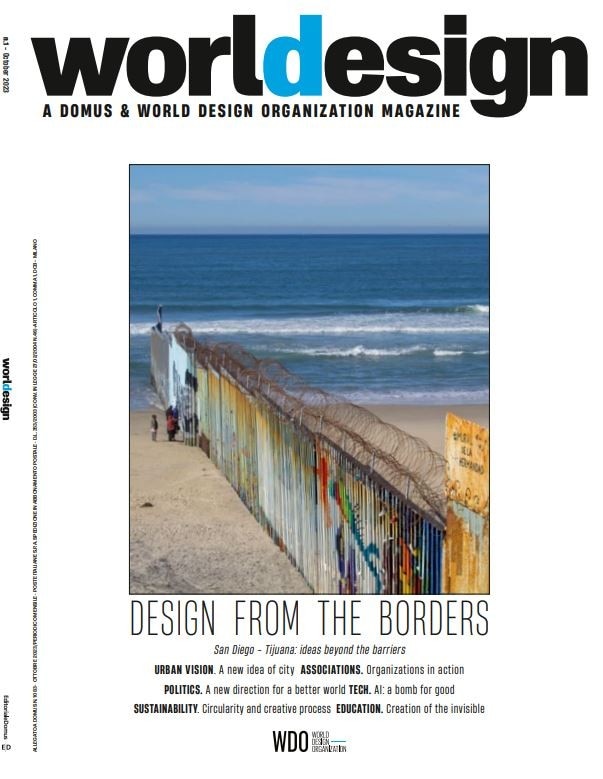
The Diario pages about current events open, like usual, with the column Italian journey by Walter Mariotti. Domus Editorial Director stops by “Where Italy Ends:” a North-East journey through Trieste, Muggis, Casarsa della Delizia and Aquileia. Francesco Franchi, in his column Graphics, talks about Dot Pad, a tactile display by the Korean company Dot, which through 2,400 mobile pins allows people who can’t see to touch images. For the Kids column, Elena Sommariva presents Petite École (2019) by MOS Architects in Versailles and the textbook result of that experience. Sommariva talks also about Wonder Cabinet in Bethlehem, a cultural production space created by AAU Anastas, visited just before the recent escalation of events between Israel and Palestina. In dialogue with New Makers Bureau James Hampton, Giulia Ricci writes about the recent project for an art center in Kampala, made with “hyperlocal” materials and involving the local creative community. In Tycoon and Talent, Alberto Mingardi and Silvana Annichiarico respectively talk about Walt Disney and objects as political gestures by the Israeli designer Eden Ohan. In the Mnemosine column, Cristina Moro traces the history of the Taliesin lamp designed by Frank Lloyd Wright and today produced by Yamagiwa in collaboration with the foundation of the American designer. In the column Points of View, Giulia Ricci interviews Mae-Long Lokko and Coretin Dalon from the Bento group about the mycelium and new materials for architecture that work with nature.
Domus 1083, the first issue of Worldesign and result of this new collaboration with the World Design Organization (WDO), is out this month. Alongside Editorial Director Walter Mariotti, the project features historian designer and professor at the Politecnico di Torino Pier Paolo Peruccio in the role of Scientific Director.
Opening image: La Salle Labrouste – La Bibliothèque de l’INHA Paris I 2017 ©Candida Höfer/VG Bild-Kunst, Bonn 2017


